With a few hams on the club we’re busy building 13cm SSPA’s. The base equipment is ex 3G/UMTS equipment. There are two models availlable for around 10 euro’s and can be found on ham flea markets. The small module has an output of about 30 Watts, the big modules output is around 90 Watts. on 2140 MHz. Both are usable on 2350 MHz. First, let’s have a look at the stages and modules used. Goal is to use the SSPA for the Es’HailSat 2 uplink. See PA3FYM’s website for details about antennas used for this project.

From left to right we have 2 modules on the 30 Watt SSPA, 3 on the 90 Watt SSPA. I’ll write down the details of the 90 Watt SSPA. The 30 Watt version is the same, but the last stage is missing. The input (left) is +5 dBm (3 mWatt) and is feeded into an MHL21336, the blue module. This has an amplification of 31 dB and is feeded into the second stage, an MRF21030S with an aplification of 13 dB. From here, it goes to the final stage to add 5 dB more gain using an SRF7068H5HS (MRF21085S?).
I’ve created an bypass in the first stage. The output of the LZ5HP transverter is about 2 Watts and, altough 1,5 dB to less, enough to feed the second stage. The alternative was to attenuate the TX-signal from the transverter with 30 dB from 2 Watts down to 1 mililWatt. Additional benefit is that the first stage (blue module) has an aplification of 31 dB wich will result in difficulties in the housing due to howling and crosstalk. By bypassing this module, that problem is solved the easy way.
-

-
On the left, an Pi filter to attenuate the imput is clearely visable
-

-
Fron this stage, the output will be around 30 Watts
-
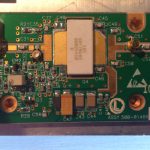
-
The final stage to amplify to 90 Watts with integrated circulators between the stages
All is powered by 28 Volts (DC) and still work in progress. To be continued.
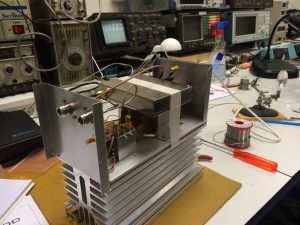
Remco’s (PE1PIP) result…






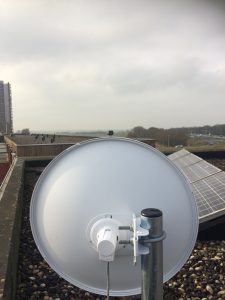


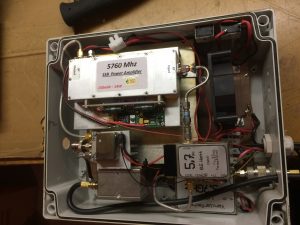













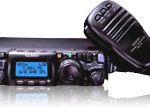 To work more portable on UHF+ and SHF (and to have a nice transceiver to feed the LZ5HP 13cm transverter) I’ve bought an Yeasu FT-817nd at the
To work more portable on UHF+ and SHF (and to have a nice transceiver to feed the LZ5HP 13cm transverter) I’ve bought an Yeasu FT-817nd at the 
